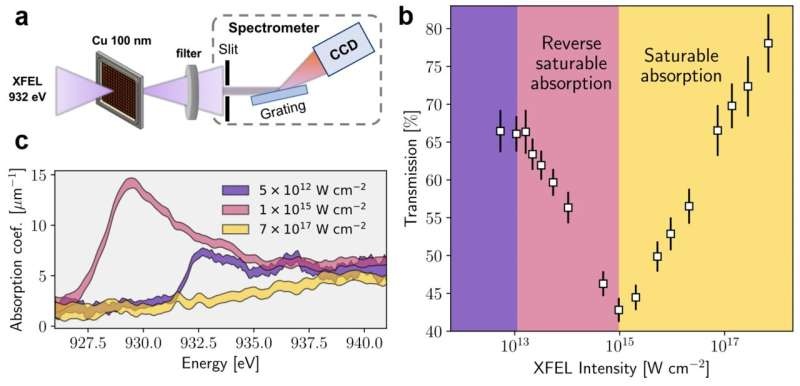Researchers at the European XFEL have made a groundbreaking discovery by using powerful X-ray lasers to create and study a state of matter known as warm dense matter (WDM) within a copper foil. This exotic state, which resembles the conditions found in the interiors of planets and fusion reactors, offers valuable insights for the advancement of clean energy technologies.

These studies will shed light on the mysteries of warm dense matter.
A mixture of states, one too hot to be characterized by physics of condensed matter and the other too dense for physics of weakly coupled plasmas. Here we enter the exciting and challenging region of warm dense matter (WDM), an experimentally elusive state.
These studies have now been taken one step further using the intense X-ray pulses from the European XFEL which enabled to produce and study this exotic state of matter in a copper foil. In the immediate future, this will allow us to actually probe the properties of WDM so at the moment it is of interesest but we can expect many new applications as well.
Their impressive achievement illuminates, not just the physics of WDM but also has important implications for the development of inertial confinement fusion, a technology that offers a potentially unlimited source of clean energy. Efficient equilibration of large systems to a temperature T is crucial for understanding materials under extreme conditions, as relevant in the hot interiors of planets or in inertial confinement fusion projectiles.
Unveiling Dynamics of Electrons
Their results demonstrated that the increased opacity of the copper foil is unequivocal evidence that they have successfully produced and studied WDM in the laboratory. But the transformation occurs too rapidly for the atomic nuclei of the metal to change; thus the material represents an exotic state with a cool lattice but with “some” ionized electrons hot and therefore not in thermal equilibrium with other (free) electrons of the metal.
To describe this complicated setting, the researchers created an advanced theory that brings together solid-state and plasma physics. This new level of inventiveness is necessary for inertial confinement fusion to work—where radiation energy abosrption and transmission has been central to its operation.
The researchers even believe that shorter X-ray pulses like the attosecond pulses demonstrated by the European XFEL could afford them an even more curt look into the electron dynamics playing a role in warm dense matter formation. These ultra-fast X-rays pulses pave the way for “filming” important changes at atomic scale — such changes to electron motion and charge or atomic configuration, which are only now becoming better understood thanks to novel theory from a Melbourne group and demonstrated in this new experiment.
Conclusion
The research carried out at the European XFEL is a breakthrough, helping scientists to understand how copper can be transformed into an exotic form of matter know as warm dense matter — a mysterious state that has fascinated and eluded much-expertise in clean energy technologies like inertial confinement fusion. Using ultra-brilliant X-ray lasers, the scientists not only created and characterized this bizarre state- they also established an entirely new way to study matter at the most fundamental levels in ways that may enable new research in ultrahigh-speed electronics. These results could open the door to a more sustainable and energy-efficient future as scientists push scientific limits.
